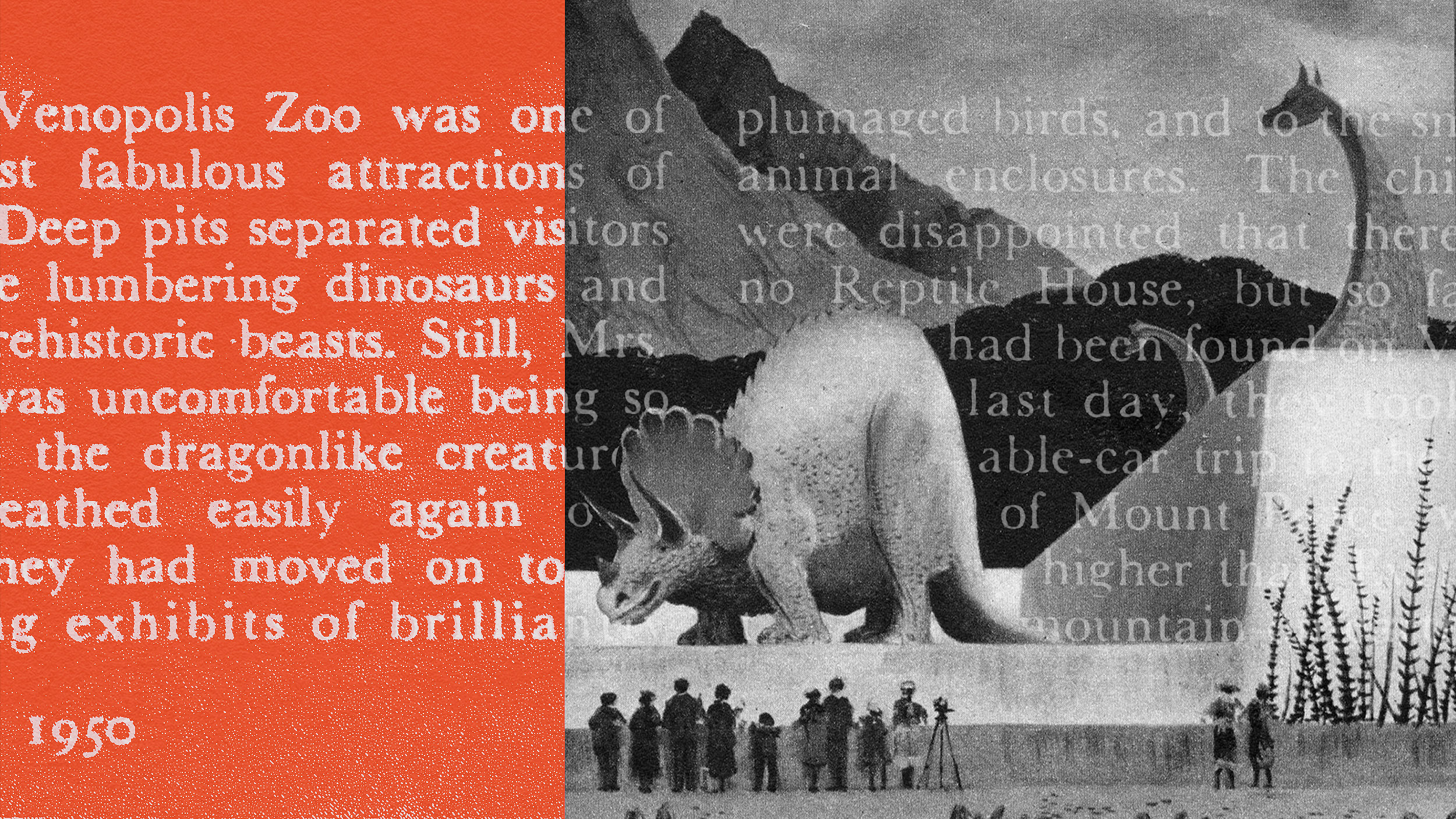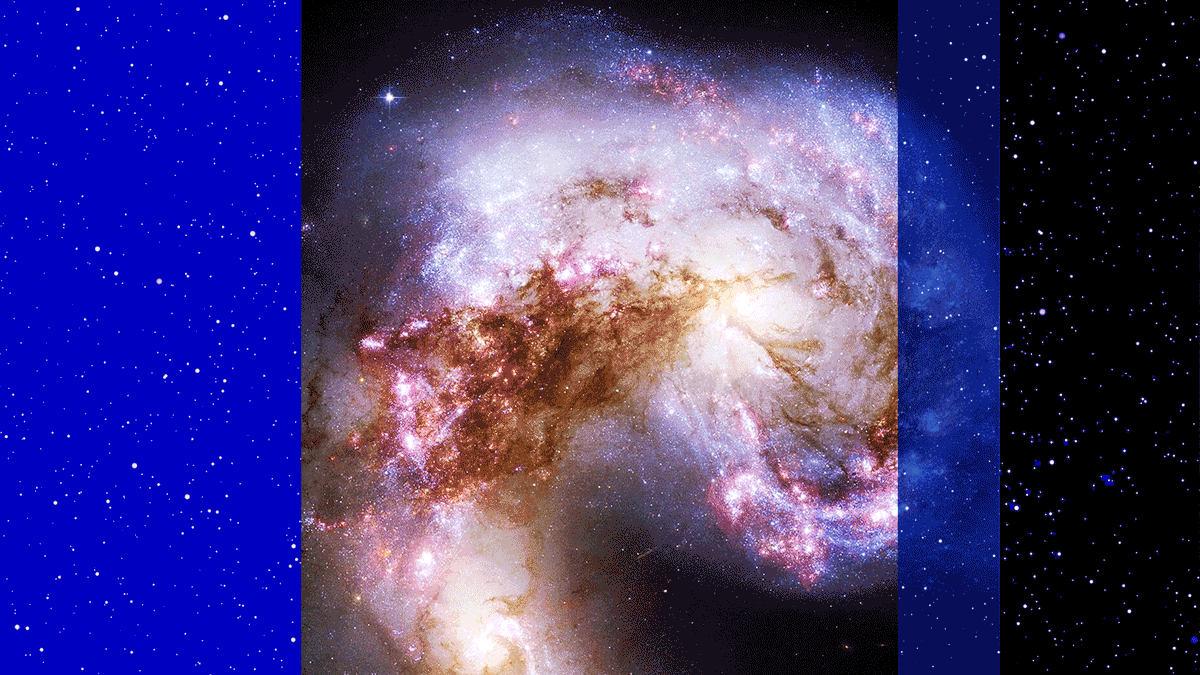How Science Creates (And You Can See) The Best Aurora Shows On Earth

Including where to go, and when, for the most spectacular views.
Against the backdrop of a dark, clear night sky, you can see the Moon, planets, stars, the Milky Way, and even deep-sky objects, all with your naked eye. But if you’re located close to the poles and the right conditions occur, you’ll see something else in the sky as well: a shimmering, fast-moving curtain of color. Most often, that color is a brilliant green, although blues and reds sometimes appear as well. For centuries, skywatchers marveled at the appearance of the Aurora Borealis (in the north) and the Aurora Australis (in the south), but had no idea what created these transient light shows. Today, we not only understand what causes them, but we can predict when they’ll occur, how spectacular they’ll be, and — most spectacularly for those of us who want to take in the sights for ourselves — where to go to get the best views of these phenomena in the world.
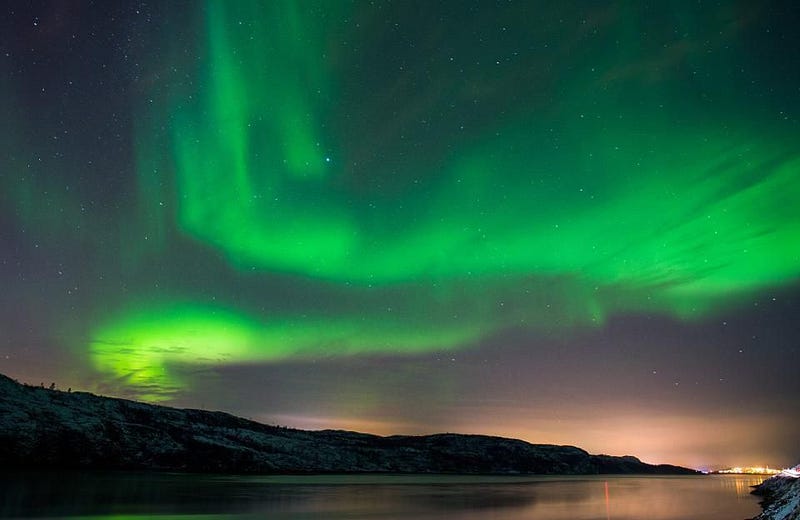
If you were to look at the Earth’s atmosphere from extremely high up, you would see that it has layers that stand out from their various properties. At about 80–105 km up, there’s a layer of sodium in our atmosphere that enters an excited state during the day, when it’s in direct sunlight. At night, the atoms cool off and drop into the ground state, emitting a characteristic yellow glow. As you go higher, oxygen, nitrogen, and hydrogen atoms bind together in various ways to create other optical effects.
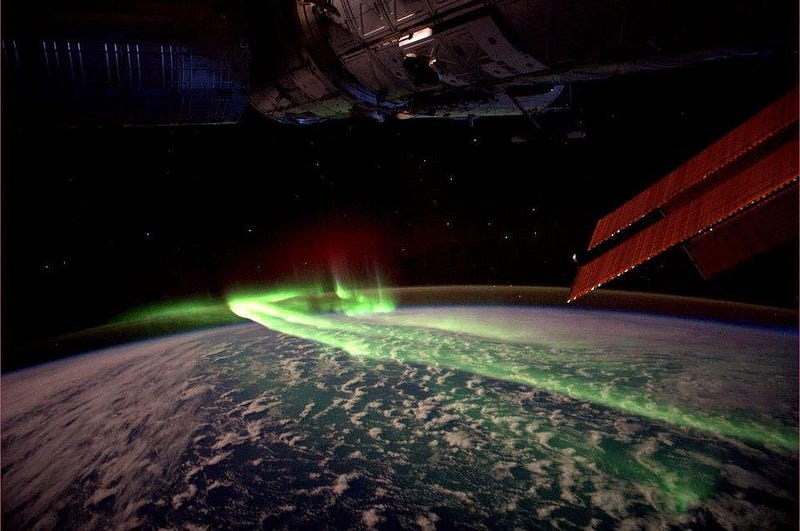
You can create a low-altitude red airglow from hydroxyl (OH) molecules, which overlap with the sodium layer. Above both of those layers, you can see bright green airglows from nitric oxide (NO) and, primarily, monatomic oxygen (O). A blue airglow sometimes appears just above the green layer due to two oxygen atoms forming molecular oxygen (O2), a process that again occurs primarily at night. Finally, an ultra-high altitude red airglow gets created from electrons dropping through the orbitals of excited oxygen atoms and excited hydroxyl radicals (OH-).
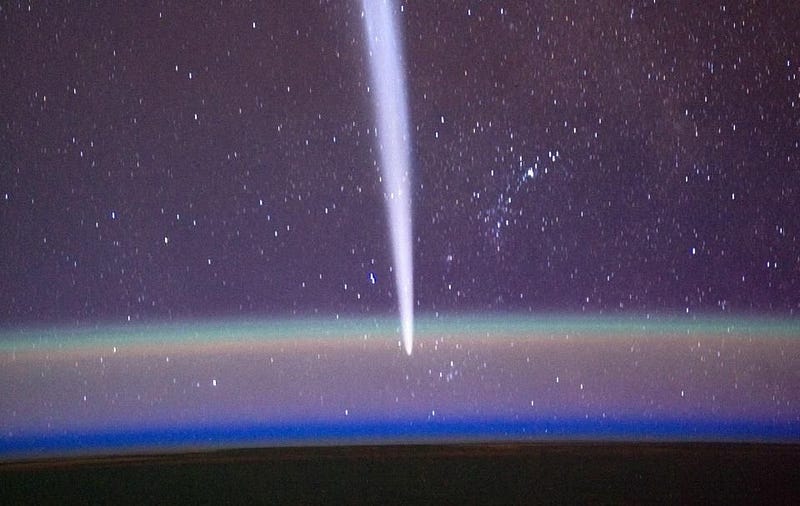
All of this is normal, routine, and caused simply by sunlight interacting with Earth’s atmosphere. During the day, light hits these atoms, molecules and ions, exciting or ionizing them, and then at night, the electrons drop back down towards lower energies, emitting light when they do. But the Sun often emits more than just light: it can emit particles as well. The solar wind is an example of a slow, steady stream of particles coming from the Sun, traveling past Earth, all the planets, and eventually out of our Solar System; it’s always present. But every once in a while, we’ll get an event like a solar flare, a corona mass ejection, or other enhancement of particles — in terms of both speed and number — that can create a spectacular display here on Earth.
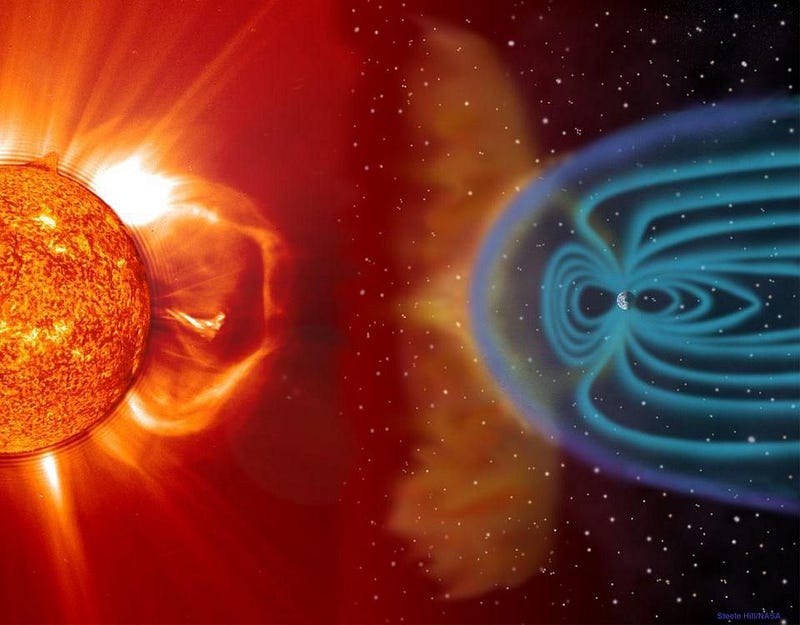
Charged particles emitted from the Sun don’t simply travel in a straight line, but follow a path that’s curved by the Sun’s magnetic field. Because the Earth has a magnetic field as well, these particles are often funneled down around the Earth’s magnetic poles, with the faster particles capable of striking closer to the equator. The Earth’s atmosphere does a remarkable job of shielding the surface from these particles; so long as you’re on the ground, you’re physically safe from even the most massive solar storm. But the closer you are to one of Earth’s magnetic poles, the greater the chance you’ll have to see a spectacular auroral light show.
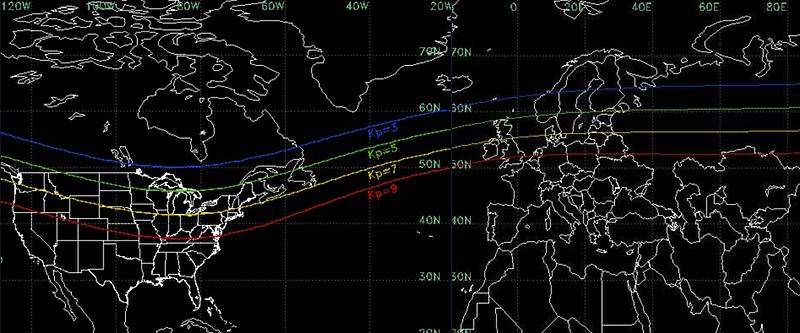
The particles that will wind up striking Earth get funneled down into our atmosphere along the magnetic poles, where they strike our world in a “ring” on both the north and south sides.
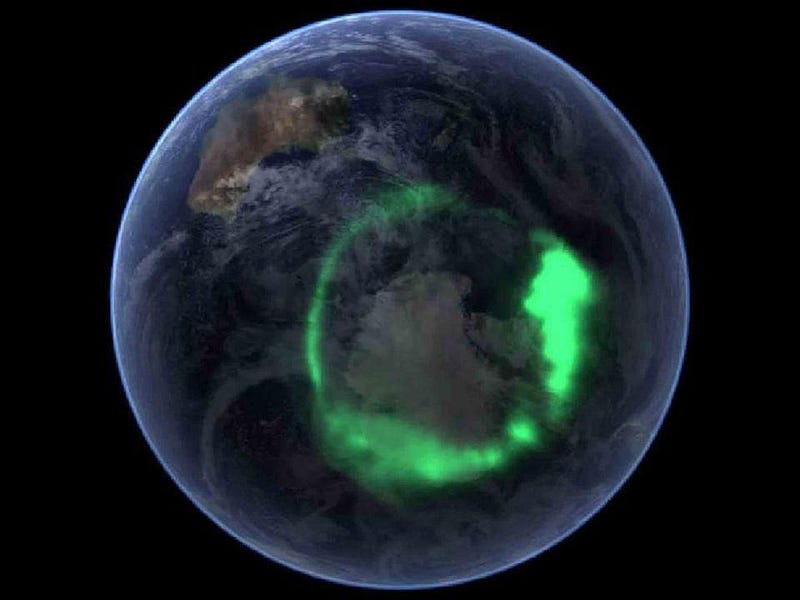
The greatest shows come from solar flares; the stronger the flare that created the ejection from the Sun, the faster and more energetic these particles are. The hydrogen, oxygen and nitrogen in our upper atmosphere get struck by this radiation, ionize, and finally encounter free-floating electrons to recombine with. When these electrons drop down in energy levels, they emit light of a few specific wavelengths: most commonly green, but sometimes red or blue. The atmosphere is made up of the same atoms, molecules and ions all over the world; the variation is caused by the specific properties of the particles striking the atmosphere at the time!
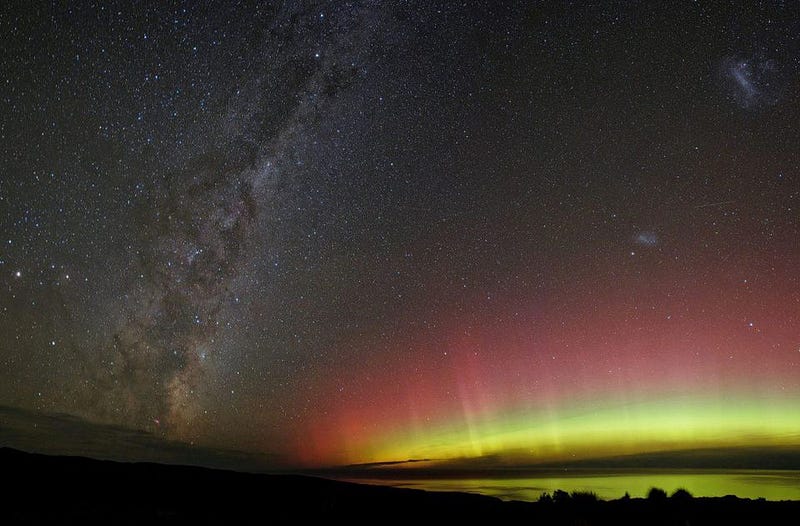
It surprises a lot of people who’ve seen still photos of the aurora when they see it for themselves, with their own eyes, for the first time. Auroral displays aren’t static, but rather move quite quickly, like a green, diffuse curtain being pulled and swirled across the sky. The best views of the aurora — and I hate to say it, because most of us will never experience it firsthand — is from above the Earth’s atmosphere, in outer space.
But the second best place to view the aurora is from anyplace within about 30 degrees of the Earth’s magnetic pole. This includes much of northern Canada and Russia, northern Norway, Sweden and Finland, as well as all of Iceland, Greenland, and (in the south) Antarctica. Even without a spectacular solar event to coincide with them, aurorae in these locations are commonplace. Although you can see them at any time of the year, the best time to view them is in the winter, when you have the greatest number of hours of darkness, when you’re coincidentally experiencing clear skies.
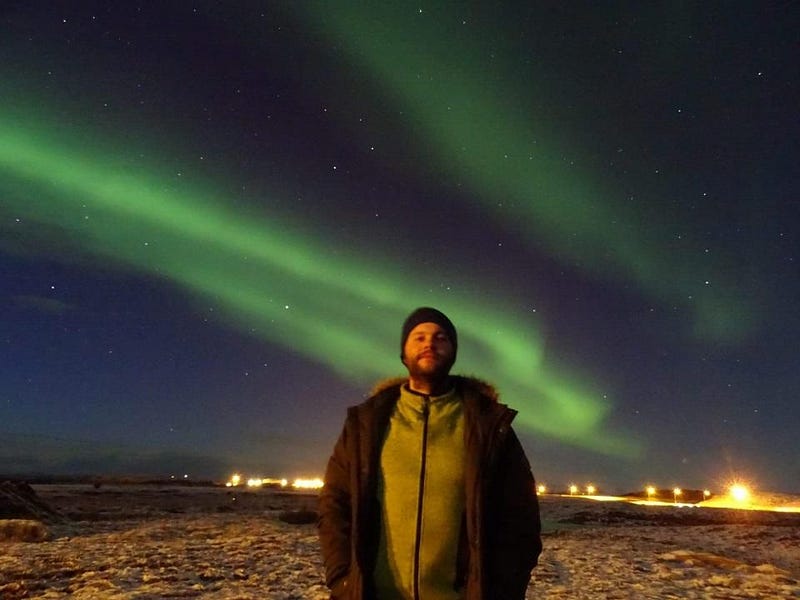
The photographs you see of aurorae are incredibly impressive, and represent what you’d see over a relatively short span of time: usually just 15–30 seconds. I spoke with Óðinn Kári Karlsson (in the “aurora selfie” above), who lives in Iceland. While he has a lot of experience with photographic equipment and the tourism industry, the aurora photo you see, above, as well as the gallery, below, represent his very first time photographing an aurora himself! According to Óðinn:
[This] was my first time taking my own photos after years of helping my clients to use their cameras on tour. I took the photos with iso 1600, aperture 28 and shutter speed between 15 and 30 sec. Then I used a tripod. The area I took them at is Stykkishólmur on Snæfellsnes.
Have a look at the gallery for yourself!

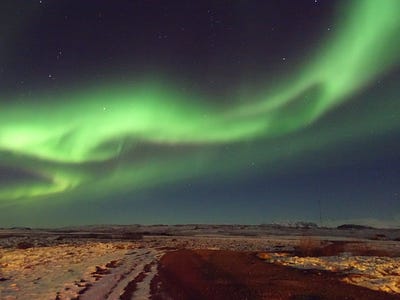

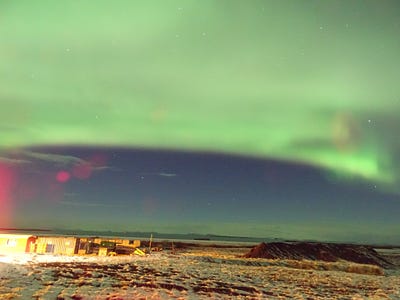
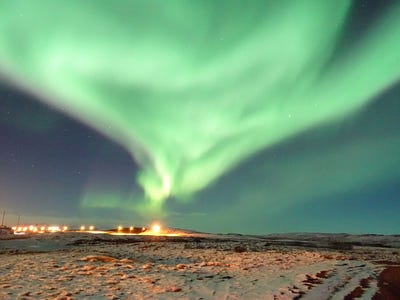
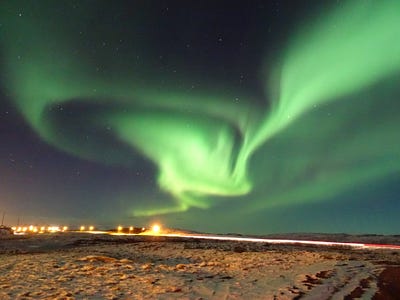
This coming January, I’ll be leading an astrotour of Iceland (spots are still open), one of the best and most reliable locations to view the Aurora Borealis in the entire world. With 16 hours of complete darkness per night near the solstice, any clear-sky location that’s close to the poles and free of light pollution will offer you a spectacular chance to see this natural wonder of Planet Earth for yourself. Much like a total solar eclipse, the images, videos, and descriptions you can see are breathtaking, but it’s no substitute for experiencing it for yourself. The Universe is out there; don’t miss your chance to experience all it has to offer.
Ethan Siegel is the author of Beyond the Galaxy and Treknology. You can pre-order his third book, currently in development: the Encyclopaedia Cosmologica.



